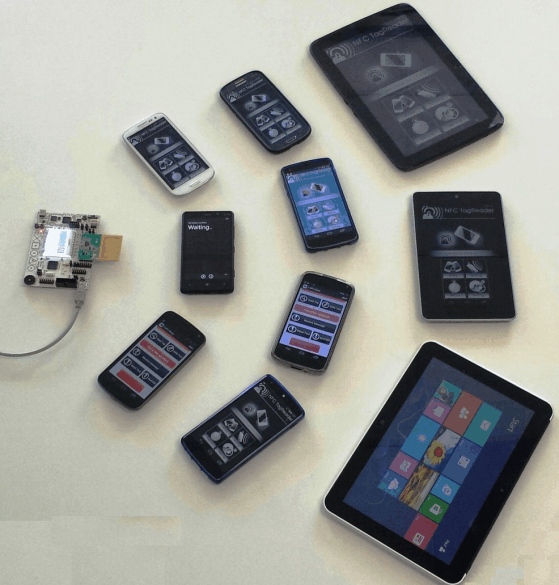SLOA192B April 2014 – March 2019 TRF7970A , TRF7970A
-
NFC active and passive peer-to-peer communication using the TRF7970A
- Trademarks
- 1 Introduction
- 2 Initial RF Collision
- 3 TRF7970A Register Settings
- 4 Peer-to-Peer at 106 kbps
- 5 Peer-to-Peer at 212 kbps and 424 kbps
- 6 Hardware Description
- 7 Passive and Active Peer-to-Peer Firmware Example
- 8 Quick Start Guide
- 9 Operational Overview
- 10 Peer-to-Peer Interoperability Results
- 11 Conclusion
- 12 References
- Revision History
NFC active and passive peer-to-peer communication using the TRF7970A
Peer-to-peer (P2P) is one of the three modes supported by the TRF7970A. The Near Field Communication (NFC) market is emerging into multiple fields including medical, consumer, retail, industrial, automotive, and smart grid. P2P is very common in these fields, because it allows for a wireless virtual channel to be created between two devices. This application report describes two NFC technologies, the NFC-F and NFC-A protocols, which are used to initiate the communication for peer-to-peer active or passive modes. Furthermore, this application report explains how to implement an application using active or passive P2P communication, supporting baud rates of 106 kbps, 212 kbps and 424 kbps on the TRF7970A transceiver.
Project collateral and source code discussed in this application report can be downloaded from http://www.ti.com/lit/zip/sloa192.
